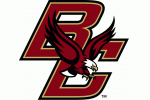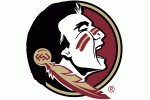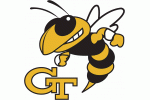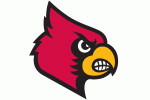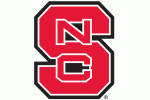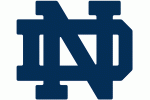I’m in the process today of contacting Comcast to review my account options (I just got a letter in the mail from them about this – so I’m eager to see if they will lower my cable bill. NOT. THEY WILL NEVER DO THIS).

After I got this letter in the mail, I got motivated to check and see “what is out there.” Like, what options do I have in the Alexandria, VA area. Trust me, we don’t have much here – it’s basically Comcast, Direct TV, or Dish Network – and the Sling streaming service (which is very limited in nature), but that’s it.
I saw this interesting article over at @TrustedReviews today about Amazon’s plans to start streaming live sports television:
The Wall Street Journal has published an extensive report detailing Amazon’s supposed bid to introduce live sports broadcasting to its existing Amazon Video media-streaming platform. The retail giant has reportedly been in talks with sports organisations globally, including some of the USA’s biggest players: the National Basketball Association (NBA), Major League Baseball (MLB), and the National Football League (NFL).
But one of the biggest challenges Amazon is facing is licensing rights, many of which are already tied up in complicated long-term contracts. For instance, the WSJ cites the NBA, whose deal with ESPN and TNT doesn’t expire until after 2024-2025 season. And the NFL’s contract with ESPN, CBS, Fox, and NBC will also run into early next decade.
Amazon has also had conversations with “soccer, lacrosse, and surfing leagues” according to one of the WSJ’s unnamed sources. For example, Amazon is said to have approached Univision Communications, asking if it could produce and package the Mexican soccer league games that it doesn’t currently air.
It’s also not yet clear how Amazon plans to sell the live sports to its potential customers. The report says there is a “debate internally” about whether the live sports should be available for free with existing Prime subscriptions, which cost £79 per year [that’s $99 in the United States]. Alternatively, Amazon may peddle the sports content as a premium add-on subscription, according to a source.
“With at least some leagues, including the NBA, Amazon has floated the idea of creating an exclusive premium sports package available with its Amazon Prime program, though the details are unclear, the people said,” writes the WSJ. “Such a package could attract new members to the $99-a-year Prime program, as well as to a ‘skinny bundle’ of live online channels that Amazon is pursuing.”
It’s worth noting that Amazon doesn’t necessarily have to acquire live sports rights either; Amazon could simply license channels, just like traditional cable distributors do. But it’s still a challenging shift, as live sports are the last real bastion of security for traditional broadcasters. If online streaming services make significant headway in live sports, an area where they have historically struggled, then it could see many viewers cut the cable-cord for good.
Indeed, Amazon is already acting on streaming live sports television (h/t @nytimes):
SEATTLE — Amazon customers will soon be able to watch live football games as part of the retailer’s growing online video service.
The National Football League has reached an agreement with Amazon to allow Amazon Prime customers to stream 10 “Thursday Night Football” games in the coming season, N.F.L. and Amazon representatives said. Prime customers spend $99 a year for a membership that includes free shipping and a video service with a library of movies and TV shows.
Amazon agreed to pay about $50 million for the streaming rights to the N.F.L. games, according to a person briefed on the deal who asked for anonymity because the price was confidential. The amount was about five times the roughly $10 million Twitter agreed to pay the N.F.L. last year for streaming rights to “Thursday Night Football,” this person said.
The agreement represents another step in the delicate dance between tech and entertainment companies as more viewers shift their viewing habits to the internet and digital devices. Amazon and Netflix are pouring money into their video services, both licensing content and producing original programming.
Could Amazon move into streaming live college sports television? Absolutely. 100%. The cable model is not all that anymore. Consumers have decided that they don’t want to pay lots of money for cable television anymore. Towards that end, @TyDuffy wrote over at @AwfulAnnouncing that the addition of Maryland and Rutgers basically is a “dead weight” scenario for the Big 10 that isn’t going to help the current Big 10 Network cable model in the long run:
The Big Ten added Rutgers and Maryland in 2014. It was different than previous football additions. A Big Ten invitation was a rarified event. Penn State (No. 11) and Nebraska (No. 12) were storied programs with multiple national titles. Even Michigan State (No. 10) was coming off a 26-1 run and a national title in 1953. Rutgers and Maryland? The schools had combined for one top 10 AP finish since 1956.
Not surprisingly, the move has not worked out on the field. Rutgers has gone just 4-21 in conference play. Maryland, 8-17, has not been much better. Paradigms change quickly in college football. Maybe young D.J. Durkin gets something going with the Terps. But, the prognosis for neither program in a division with the great B1G powers is optimistic.
…..
How the teams fared has been irrelevant. The additions were never about the competition. It was all about money. Adding Maryland and Rutgers was a cynical ploy to add the large and growing New York and D.C. television markets to the Big Ten’s “conference footprint.”
…..
Adding Rutgers and Maryland is a windfall if the cable model stays intact. As we’ve learned from the countless ESPN in decline pieces, that model is crumbling. Subscribers are leaving in a steady trickle. Technological innovation – fast, reliable Internet from another source – could break the dam. [Emphasis mine]
We’ve reached the point where outrageous live sports rights figures will diminish. It’s hard to see ESPN or FOX shelling out stupid money for college football today, much less in five or six years. The Big Ten negotiating a shorter TV deal to hasten the next round of negotiations no longer looks like a masterstroke.
A Big Ten Network reliant on active subscribers and ad revenue may not be viable in its present form. The network’s best bet would be bundling with Fox News (median age viewer: 68) for the future, which may not be a long-term strategy.
Cable’s death carries uncertainty. There’s no precise gauge of what will happen. What I can predict is there will be a profound shift toward quality of games vs. volume of games.
…..
Whatever outlet is streaming college football games in the 2020s will not want the bloated buffet of games. The present model favors the conferences. ESPN and FOX need live sports content to get cable providers to carry multiple networks. That changes if you’re dealing with Apple or Amazon.
We could see a model where the ten best Big Ten football games per season are on Amazon Prime. The Big Ten is streaming the rest of its football package and almost all of regular season college basketball on its own.
Cable subscribers no longer matter in that scenario. Fans who watch do, the very fans the Big Ten blithely disregarded. Rutgers and Maryland become dead weight. [Emphasis mine]
Those two schools dilute the product. They drag on attendance when they show up to Michigan, Ohio State, and Penn State. They drag on television revenue. Mich/OSU/PSU are playing Maryland and Rutgers vs. sellable games against Nebraska, Wisconsin, and Iowa. They are also two extra mouths to feed when it comes to distributing the diminished revenue Mich/OSU/PSU are producing.
Adding Rutgers and Maryland made short-term financial sense for the Big Ten. Making the product worse may have grave consequences in the intermediate to long-term when the Big Ten is courting active viewers rather than a cable footprint. [Emphasis mine]
In fact, Amazon has a streaming partners program as part of its Prime Video Service – and I could see NCAA conferences setting up individual deals with Amazon to broadcast packages of games (after their long-term contracts are up with, say, ESPN). The bigger move, however, will be if companies like Amazon and Google make the move into becoming broadband providers (Google is already offering Google Fiber in certain markets, including Louisville and Raleigh). That changes the game for all U.S. consumers because then they can start negotiating streaming deals.
The time for reliance on old-school audiences who just watch events on television is over.


